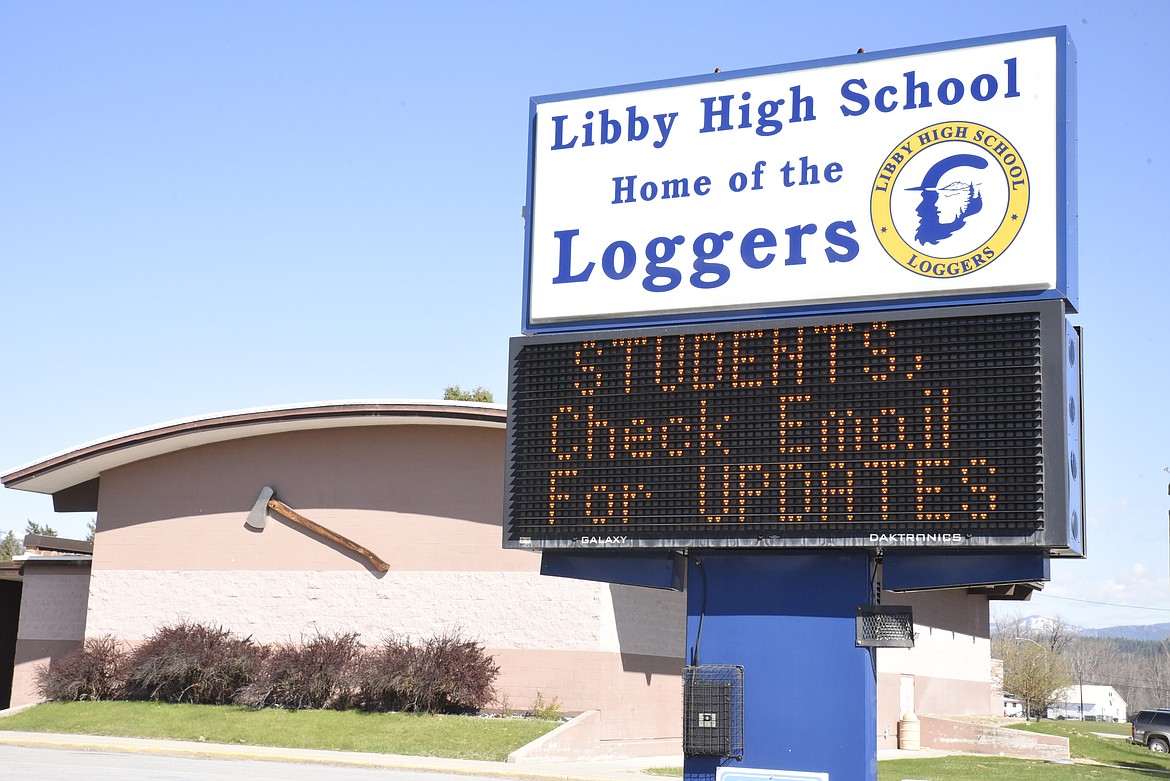Libby sees bump in new, out-of-state students
With schools across the country committing to remote learning, Libby administrators have seen a rise in out-of-state enrollment from families looking for an in-person education.
Five students from Washington, California, and beyond already have signed up for fall classes at Libby Middle High School, Principal Ruth Vanworth-Rogers said after a Sept. 14 school board meeting. Eight out-of-state students from three different families enrolled in Libby Elementary School last week, according to Scott Beagle, curriculum and special services director.
While many of the students have come from Spokane, Vanworth-Rogers said a family from Texas recently enrolled a student at the middle high school. At the elementary school, administrators have seen new pupils come from as far as Alabama, Beagle said.
Some of the out-of-staters have moved to Libby for job opportunities or to be closer to family, according to Beagle. But the draw of in-person learning offered by Libby Schools was a motivating factor for many.
“The word is out that we have school going on and a lot of people are wanting that,” Beagle said during the meeting. “They’re actually coming here for that.”
As they handle the out-of-state influx, school administrators reported that they have fared surprisingly well in reopening classrooms during the novel coronavirus pandemic.
All but one of the 35 quarantined middle high school students returned to school on Sept. 16. The county health department issued the self-isolation orders for the 18 high school and 17 middle school students after two students tested positive for the virus during the first week of the month.
Although administrators worried parents would pull their students out of classrooms following the quarantines, Jim Germany, assistant principal of the middle high school, said families took a measured approach. The few parents who kept their children out of school for a few days eventually sent the pupils back.
Superintendent Ron Goodman said no additional cases have cropped up in schools since the quarantines were issued. If the virus had spread through the school, Goodman said administrators would have had to transition to fully remote education.
“I really think we dodged a … bullet,” said Germany.
Offering both remote and in-person classes and administering two curricula has stretched some teachers thin. Germany said the most challenging aspect of the dual system is maintaining contact with remote learners.
Out of the 49 Middle High School students working remotely, only 10 are consistently making contact with their teachers in classes, according to Germany. Vanworth-Rogers said only six were passing all of their classes at the time of the meeting. The remaining 43 had at least three F’s.
Approximately half of these failing students had previously struggled with classes, according to Vanworth-Rogers. Putting them on a remote learning schedule only made circumstances more difficult. Vanworth-Rogers also pointed out that the numbers could change soon as schools are only in their first few weeks.
“If they’ve missed one assignment and there’s only three in the books, that’s an F,” she said.
Beagle reported that elementary school teachers also reported difficulties reaching pupils learning at home. Of the 635 enrolled students at the school, Beagle said 80 were on a remote learning curriculum.
The students enrolled for in-person learning at the elementary school have adapted surprisingly well to the COVID-19 requirements, according to Beagle. He estimated that only 1 percent were consistently not bringing in masks or refusing to wear them. Although teachers have recently had to keep students inside due to the hazardous air quality, he said the children have taken it in stride.
“The consensus is that teachers are just excited to have kids in the building,” Beagle said.
During the meeting, school board members approved a set of COVID-19 emergency policies. The 1900 series policies, developed by the Montana School Boards Association, are intended to cover all the bases of operating schools during the pandemic.
Declaring a state of emergency, reallocating transportation funds, outlining telework for district employees and giving board members the ability to extend the school year are among the scenarios covered by the approved guidelines.


